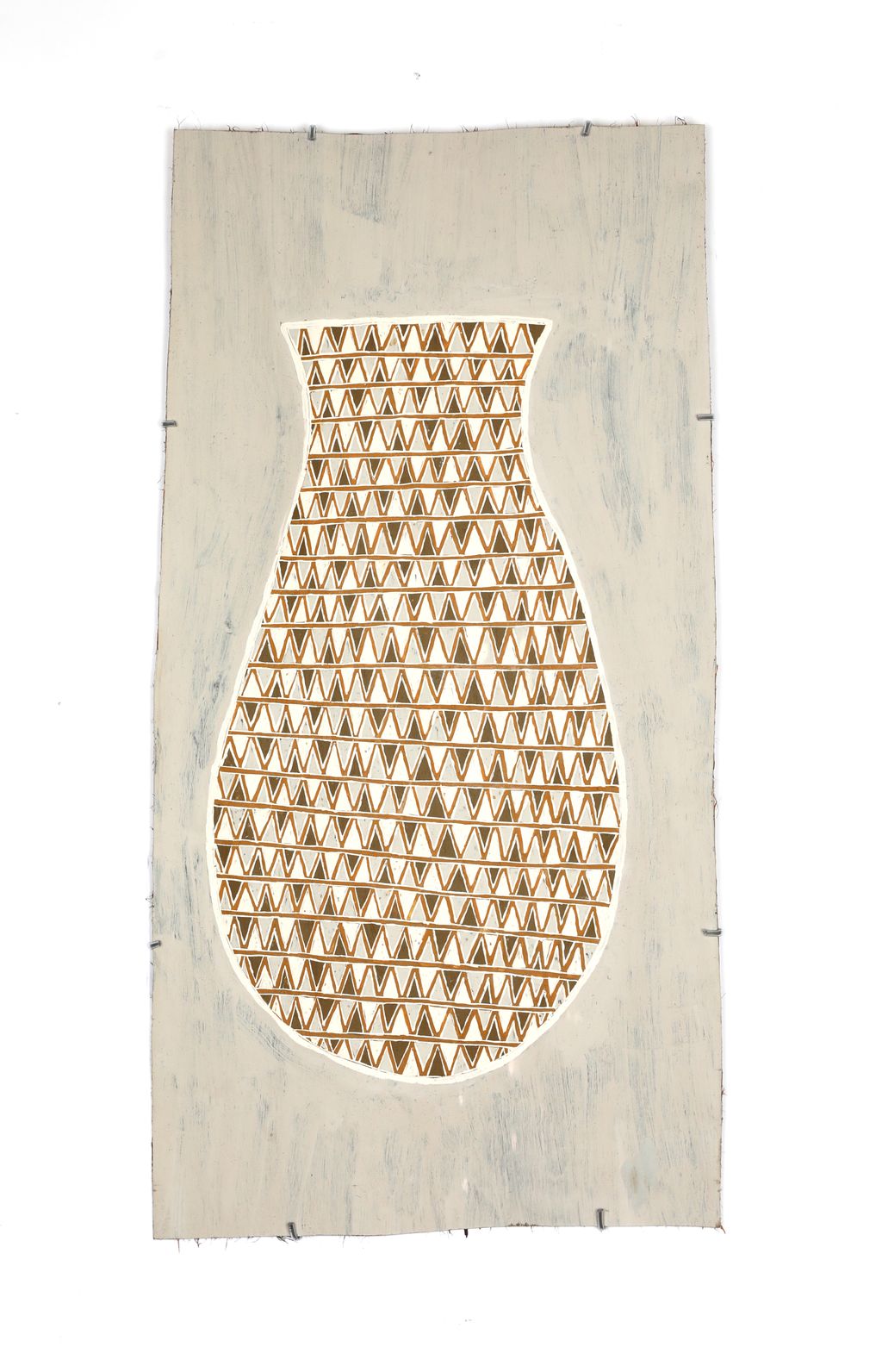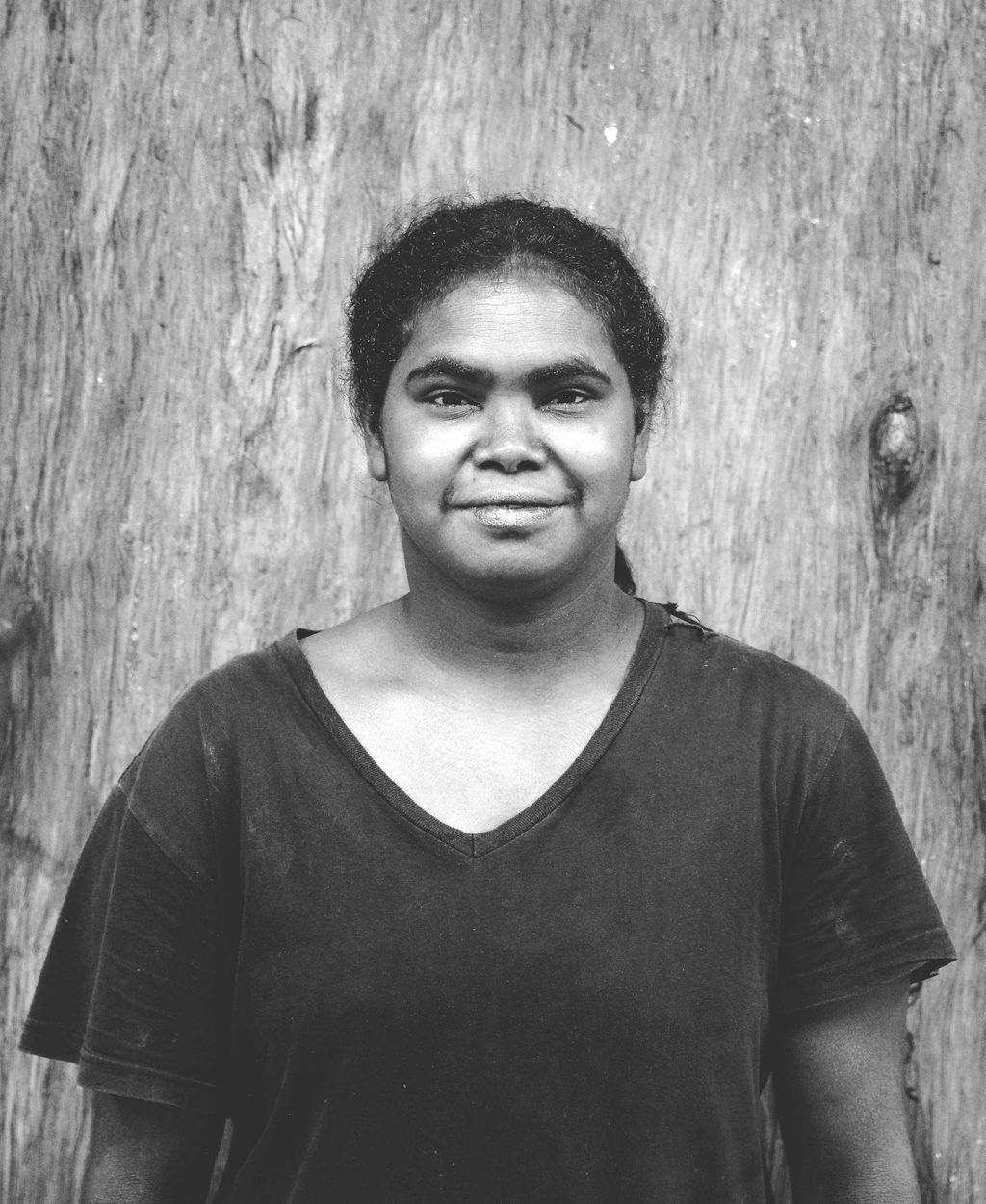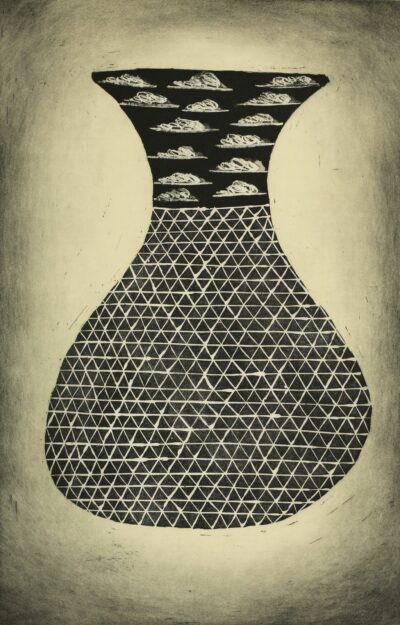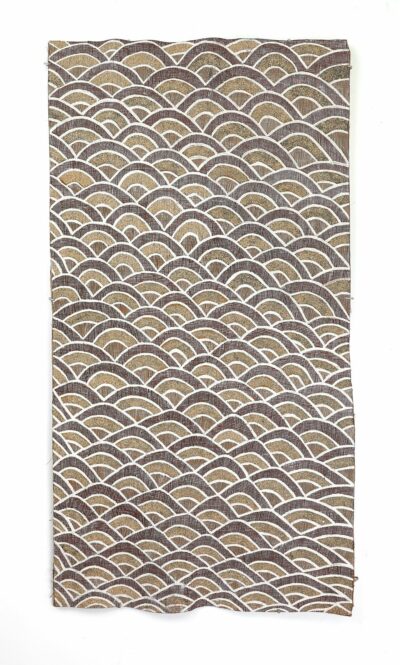Description
bulthirrirri wununmurra
Earth pigments on Stringybark
98 x 50.5cm
Year: 2023
ID: 4991-23
Rupa
Since the turn of the last century the annual visitations of the Makassanese to the Top End shores of Australia were put to a stop by the Australian Government. These sailors, gatherers of trepang from coastal waters, had for up to six centuries caught the seasonal winds back and forth from what is now known as Sulawesi. The relationship they had with the Yolŋu was amiable and through this annual contact over such a period of time elements of Macassan culture became imbued with that belonging to the Yolŋu.
As the seasons of the year ran the same ageless cycles so did the Macassan visits. Yolŋu sacred songs tell of the first rising clouds on the horizons – the first sightings for the year of the Macassan praus’ sails.The grief felt at the time of Macassan trepangers returning to Sulawesi with Bulunu (the S.E winds of the early Dry season) is correlated with the grief at the passing from life of a death in the clan. The return of the Macassans with Luŋgurrma (the Northerly Monsoon winds of the approaching Wet) is an analogue of the rebirth of the spirit following appropriate mortuary ritual. The red sails in the sunset echo the dying Sun. Hence the cloud motif which embodies the cyclical philosophy of Yolŋu cosmology.
Some of the Macassan language has been adopted into the Yolŋu vocabulary and in some cases genealogies shared. It is probable that Yolŋu seamanship was learnt from the Macassan and it was only a generation or so ago that Yolŋu travelled the coast in dugout canoes, some fitted with Macassan styled sails.
The local homeland on Port Bradshaw is Bawaka but also known in Yolŋu by its Makassan name Gambu Djeki which it is now understood is a transliteration of Kampong Zikir, a village sacred to Allah/God). Local men have the name Danyŋutjŋ which now appears to be a reference to Daeng or Mister Yutjing which is itself the Macassan transliteration of Hussein. This place is an ongoing source of fragments of pot buried in the sand which come to the surface after the Wet Season. There seems to be a limitless supply of these shards of pot. In order to understand the origin of such a density of this ceramic material a delegation from Buku-Larrŋgay went to Sulawesi in 2015.
With assistance from the Australian embassy Buku-Larrŋgay artist Nawurapu Wunuŋmurra visited Sulawesi and met with Abdi Karya from Rumata Art Space.
From here we began to understood the connection between Yolŋu and Sulawesi. We had been intrigued with the fragments of ceramic materials consistently found at Bawaka in Port Bradshaw and other places such as Melville and Daliwuy bays.
Abdi Karya told us:
“‘Gambu’, reminds me to Kampong or village. ‘Djigiri/djigir’ reminds me to zikir, dzikkiri, dzikir (praying to Allah/God in Islam).”
This is but one reminder that Islamic visitors predate European ones on this continent.
We understand that the pots originated with the Torajan ethnicity rice and corn farmers who use the clay from making their rice paddies and then fire them with the husks at the end of the harvest. They were carried here by the Bugis seaman in their praus who used them to carry their supplies of water and rice.
The pots we find at Bawaka are the result of an end of harvest ritual to smash the pots that is enshrined in songlines. It is known as ‘butulu badaw!’.





Reviews
There are no reviews yet.